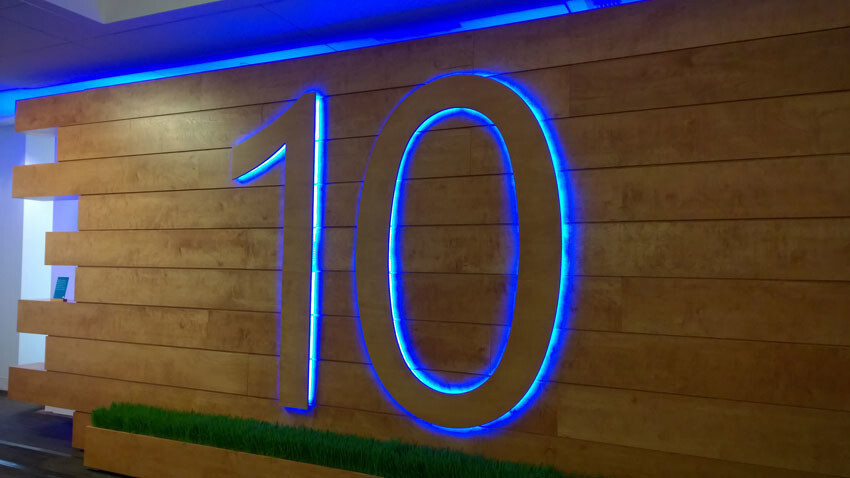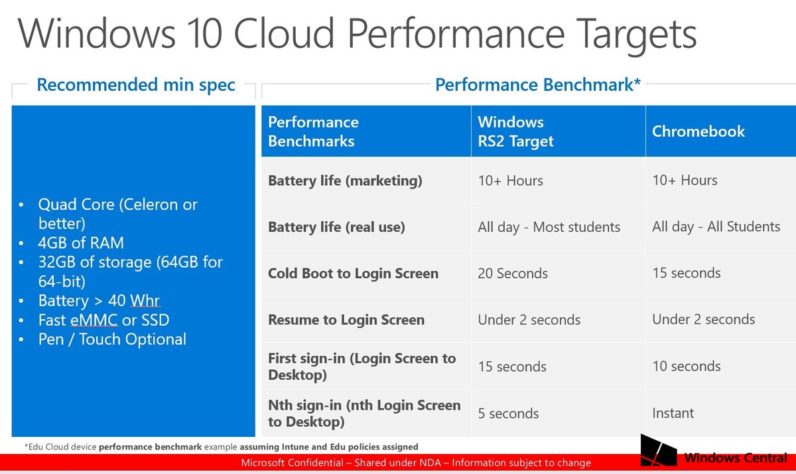
Earlier today, Windows Central leaked a document detailing Microsoft’s grand plan to take on the Chromebook. The company is reportedly releasing a variant of its main OS called Windows 10 Cloud or Windows 10 S, which can only run apps downloaded from the Windows Store.
These can be legacy apps, mind you, but they can only be downloaded from the official Windows Store. In doing so, Microsoft is able to better regulate which apps users download and emphasize software optimized for low power consumption.
Considering Microsoft is holding an event on May 2 that’s focused on education – and that Chromebooks have become immensely popular in schools – Windows 10 Cloud seems practically a given. But taking on the Chromebook is not going to be easy.
ChromeOS has seen the some of the largest growth in the US PC market the last several years, digging into both Windows and Mac sales. And it’s not hard to see why: they’re cheap, generally built well, and perform ‘good enough’ for the tasks many students need. If you don’t need to run complicated desktop software – why spend more than a few hundred dollars?
It’s not surprise Microsoft would feel threatened, and now it seems poised to challenge some of ChromeOS’ advantages. Just look at the leaked chart:

I’m all for a fast, cheap, Windows laptops with all-day battery life. I’m not even particularly worried whether Microsoft could meet its performance targets. But the way I see it, Microsoft has a few issues to address for Windows 10 Cloud not to go widely ignored.
Firstly, a huge part of Google’s success with Chrome OS is its suite of free cloud apps. Outlook and Office may still be powerful forces among adults, but with the youngins at school, Gmail and Google docs likely suffice. Of course, you can use Google apps on Windows PCs, but running them on a Chromebook ensures they always “just work.” Meanwhile Microsoft has separate Web and native versions of office – not to mention the variety of Office subscription tiers. Microsoft needs to ensure the productivity experience is as seamless as on a Chromebook.
Second, Microsoft’s marketing needs change the perception that specs matter on Windows. When people buy Chromebooks, they don’t much think about processors, RAM, and storage. It’s cheap, and it gets the job done. But god forbid someone try to sell you a Windows laptop with 3GB of RAM, even if it’s just $200.
Windows 10 can definitely run smoothly on low-end specs, mind you, especially when using modern apps – it’s just that the OS comes decades of baggage. People have expectations on what hardware you need for apps to run smoothly on Windows, especially if they want to install apps they’ve been using for years (assuming they land on the Windows Store eventually). Chrome OS has no such problem.
We’ll have to see what Microsoft has up its sleeve come May 2. We already know that its building a power-throttling feature into Windows 10 – expect to hear more about mobile performance optimizations once it announces whatever it’s planning in a couple of weeks.
Get the TNW newsletter
Get the most important tech news in your inbox each week.